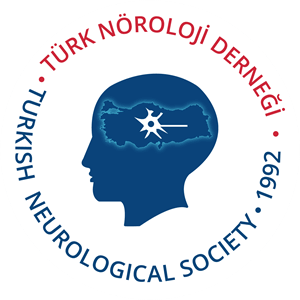Cognitive functions in radiologically isolated syndrome
Pelin Soydar1 , Hatice Mavioğlu2
, Hatice Mavioğlu2
1Department of Neurology, Aydın Atatürk State Hospital, Aydın, Türkiye
2Department of Neurology, Manisa Celal Bayar University Faculty of Medicine, Manisa, Türkiye
Keywords: Cognitive functions, multiple sclerosis, radiologically isolated syndrome.
Abstract
Objectives: The study aimed to evaluate the cognitive functions of cases diagnosed with radiologically isolated syndrome (RIS), and to analyze the correlation between cognitive functions, lesion location, the number of lesions detected on magnetic resonance imaging, and the presence of oligoclonal bands in cerebrospinal fluid.
Patients and methods: The retrospective study included 28 patients (4 males, 24 females; mean age: 32.1±8.3 years; range, 18 to 50 years) diagnosed with RIS according to the Magnetic Resonance Imaging in Multiple Sclerosis criteria between June 2019 and November 2020 and 28 healthy individuals (5 males, 23 females; mean age: 34.4±10.1 years; range, 20 to 51 years) matched for age, educational level, and sex. The Brief International Cognitive Assessment for Multiple Sclerosis was used for cognitive evaluation.
Results: The scores of the Symbol Digit Modalities Test, California Verbal Learning Test-II, and Brief Visuospatial Memory Test-Revised were significantly lower in the patient group compared to the control group. However, no significant relationship was found between the cognitive test scores of the patients and the total number of lesions, location of lesions, oligoclonal bands, and immunoglobulin G index.
Conclusion: Subclinical cognitive impairment in RIS patients is most likely due to the demyelinating process and RIS is likely to represent a preclinical or subclinical stage of multiple sclerosis. Therefore, all RIS cases should be evaluated and monitored for cognitive impairment to allow for early diagnosis and treatment.
Cite this article as: Soydar P, Mavioğlu H. Cognitive functions in radiologically isolated syndrome. Turk J Neurol 2025;31(2):186-195. doi: 10.55697/tnd.2025.262.
The data that support the findings of this study are available from the corresponding author upon reasonable request.
Both authors contributed equally to this article.
The authors declared no conflicts of interest with respect to the authorship and/ or publication of this article.
The authors received no financial support for the research and/or authorship of this article.


